The ice storm that hit southeastern Michigan Wednesday knocked the power out to over 700,000 homes and businesses. DTE blamed “ice on the lines.” In addition to the electrical lines, some trees took a hit. When morning came in my neighborhood, several mature Eastern white pines, Michigan’s state tree, had branches, brought down by the ice, scattered around the base of their trunks.
A Silver Lining
But the storm also brought a gift or two with it. The most easily identifiable gift was realizing my immense gratitude for the comforts–heat! light! cherry-walnut sourdough toast!–that electricity allows us. A few days may have to pass before I forget to marvel at the result of flip of a light switch, to appreciate the relative ease of rising from my bed into warmed air in the morning. For a few days after a power outage, it’s hard to take such everyday conveniences–that are really not so everyday–for granted.
A Surprise
Another gift of the ice storm is featured in the photo above. I became aware of these ice-encased branches when we pulled into the parking lot of the South Oakland YMCA. We’d lost power at 10:30 the night before, and we were particularly happy the Y still had power (it would, however, lose it before the next morning’s workout). After swimming my laps, I’d be able to primp for my first reading of Divining, albeit a full nine hours before the Literati Bookstore event began, but right before heading to the Royal Oak Public Library, which had not lost power, to finalize my reading selections in comfort.
When I got out of the car, I snapped the shot of the mass of glazed branches hanging down from the ice-weighted crown of the tree, both to memorialize the ice storm and with the hope of identifying the tree’s species later.
The ID Challenge
Three days later, when 42 hours with no electricity had become a memory, I was so grateful to be back at my desk with heat and light, I figured the time had come for ID-ing the ice-encased branches. I pulled up the photo on my phone and wondered, what is it I’m looking at?
Twins
Getting up from my desk to pull my favorite tree-identification guides from my bookcase, I glanced out my study window into the front garden bed presided over by an Eastern redbud. A surprise snow had covered the mulched bed during the night. Atop that snow was something that looked very familiar. I looked back at my phone.

The Puzzle
I went out and retrieved the broken branch, most likely a victim of Wednesday’s wind, to have a closer look. Is this a branch from the same kind of tree growing at the perimeter of the Y’s parking lot? The little rosary-bead formations sure look the same. But what tree species has these little purply-brown “beads” on its branches?
And what are they?
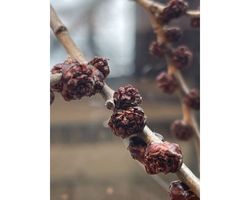
Searching the “Arboretum”
Once the sun had returned to the sky, Saturday, I wandered around both my neighbors’ and my front yard, trying to figure out from what deciduous tree (a tree that sheds its leaves annually) the wind and ice might have conspired to break the branch. Our three combined yards and the boulevard median immediately across from them host one or more individuals from almost two dozen deciduous species:
- Eastern redbud
- American sycamore
- Ginkgo
- Sugar maple (2)
- Norway maple
- Silver maple
- Red oak
- American basswood
- American beech
- Black walnut
- honey locust (3)
- hawthorn
- sweetgum
- white poplar
- paper birch
- Japanese maple (2)
- American smoke tree
- Eastern flowering dogwood
- Bradford pear (2)
- Kwanzan cherry (2)
- Weeping cherry (1)
But I know these trees. I’ve been picking up twigs, branches, and limbs from most of them for the last sixteen and a half years. I know I’d not seen such a branch as this one before.
Digging into the Books
I browsed through my three favorite tree guides that I had pulled from my shelf the day before:
- What Tree is That? (Arbor Day Foundation, 2016) [Check out the online version.]
- Trees of Michigan: Field Guide by Stan Tekiela (Cambridge, MN: Adventure Publications, 2002)
- National Audubon Society Field Guide to Trees: Eastern Region by Elbert L. Little (New York: Alfred A. Knopf, 1980)
Nada.
A Return Visit
Later Sunday, I drove back to the Y. The ice on the trees had melted in the sun.
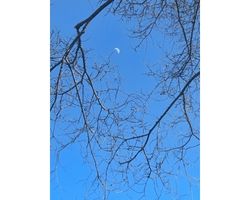
I realized I could try National Geographic‘s free (crowd-sourced) nature app Seek by iNaturalist on my phone. I opened the app and took a picture of the tree bark.
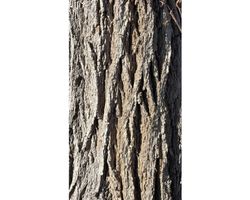
But all the app could identify was the tree’s “class”: “Dicot,” short for dicotyledon. (Flowering plants–including trees–are divided into two broad categories: dicots and monocots. Some trees that are monocots are palms, grass trees, bamboo, and yuccas.) Most of the trees with which Michiganders share land are dicots. So little help here.
I looked at the base of the mystery tree’s trunk. I found one dried but relatively whole leaf that had yet to become leaf mulch. With parallel veins and serrated margins (saw-toothed edges), it looked like . . . an elm leaf?
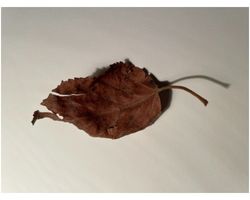
Identified
I looked up the elm choices for Michigan: American elm (unlikely, Dutch Elm Disease did most of these in ); rock elm (I know and have written about a majestic rock elm on Pelee Island; this wasn’t that); Siberian elm and slippery elm. No clue about the last two.
The slippery elm often grows near water and has forked veins near the leaf margins. No and no.
But the Siberian elm, a non-native tree introduced from Asia, is a smaller elm tree and has smaller leaves. Yes and yes.
So What’s with the Rosary Beads?
Like all elms, the fruit of the Siberian elm is a winged seed–a samara. (Another familiar tree with samaras–or keys–are maples; their “helicopters” are scientifically known as samaras or keys.)
In the case of the Siberian elm, the samara is a flat roundish green disk with a closed notch opposite its stalk. Each samara turns brown and papery in the fall and contains one seed, which is dispersed by the wind.
But if this is a Siberian elm, whose fruit is a samara, then what are those little, purply-brown beads?
Eureka!
Sunday, when I drove to Plymouth to take my mom to church, 125,887 Michiganders were still without power, but the sun was trying to come out again and the day was warmer. While I was driving on I-696, I idly noticed how “hazy” the crowns of the trees I was passing on the side of the expressway looked. Always a sure sign of spring. . . .
And then I almost jammed on my brakes.
I knew. What was making the branches of the bare deciduous trees look fuzzy was the emergence of the trees’ flower and leaf buds. And that’s what those little purply-brown rosary beads were. They were buds!
In My Defense
Why hadn’t I figured this out? I suppose I could blame the unusual week: a first reading for a new book at the end of the second day of a three-day power outage.
But tree flowers–especially in the northern climes–are generally small and unobtrusive. And very high up above us humans. We only get to see most trees’ flower buds–or flowers, too, for that matter–when a tree’s branch is bent down low to us (like at the Y, weighted down by the ice) or if it breaks off and falls to the ground (like outside my study window). The ice storm gave me the gift of sighting the buds of a tree I’d never identified before in both ways.
Minnesota Wildflowers, an excellent online source for information about Midwest plants and trees, describes the Siberian elm (Ulmus pumila) with wonderful photos and written descriptions, including:
“[Leaf] buds are about 1/8 inch long with purplish brown scales that are somewhat hairy, especially around the edges; flower buds are larger, round, and numerous.”
—Minnesota Wildflowers “Ulmus pumila”
Looking at the branch from my front yard that I stuck in a vase on my desk, I’d guess the many purplish-brown buds to be flower buds. (And, apparently, other people have a similar decorating inclination when it comes to these branches of flower buds; West Elm sells a “Faux Siberian Elm Branch” for $69, minus the vase.)
Another storm made its way through the state Monday, complete with the dreaded “wintry mix”–rain, freezing rain, sleet, and snow, a full-slate winter weather advisory. Even some gusts of wind. Be on the lookout. Those gusts may bring down tree branches bearing flower buds that you don’t normally have the opportunity to see.
Spring is coming. It was inscribed on the rosary beads of the ice storm, the flower buds of the Siberian elm.
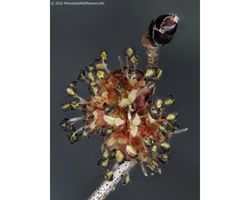
(To read their description, click: Minnesota Wildflowers)


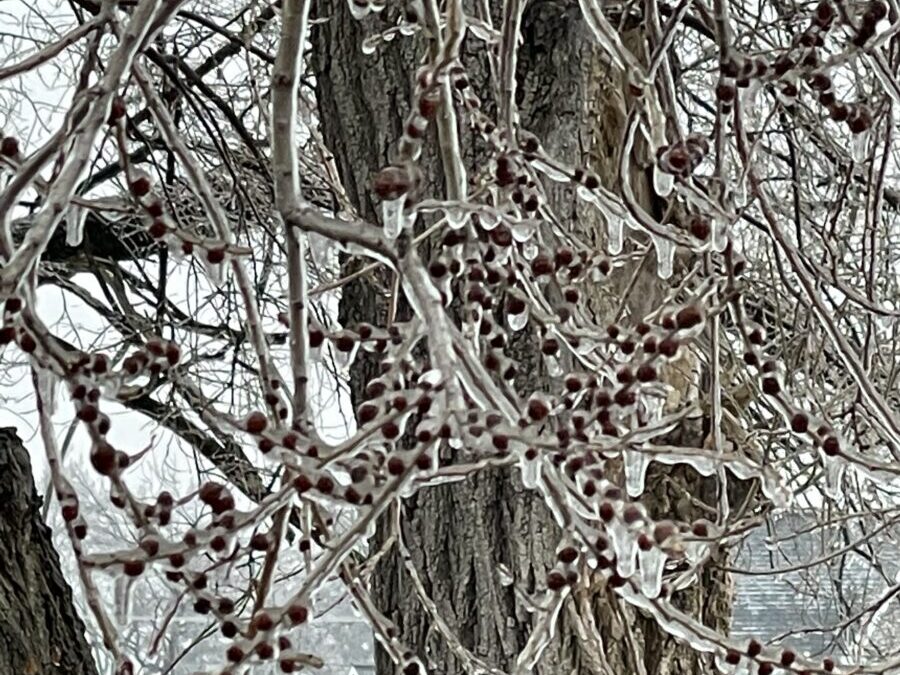

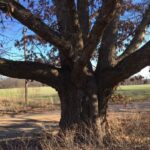
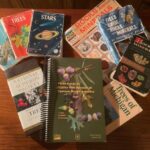
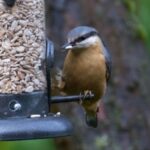
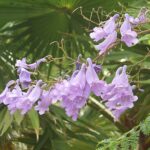

I love the image of the rosary beads and enjoyed being taken along your journey of trying to identify the mystery tree. Such fun!
I was just reading about different kinds of tree buds in the Introduction to Michigan Trees: A Guide to the Trees of the Great Lakes Region by Burton V. Barnes & Warren H. Wagner, Jr. (University of Michigan Press).
Thank you for the reference, Sondra! While I working on my tree book, I kept wishing I could find a book that showed photos of tree flowers and their buds. When I looked your recommendation up, I recognized the cover image; I must have taken it out of the library, but I suspect I wasn’t into tree flowers yet. (I just discovered that the introduction to Barnes and Wagner’s book is available online.) Tree flowers are tiny and mostly inaccessible to up-close examinations by a walker/hiker, but they are often startling in their details and variety. Fortunately, one can find images online.
In the next two weeks, the silver maples will be blooming. In 2020, the first month of the lockdown, I saw my first silver maple (a male) flower and wrote about it in my essay “The Flowering of 2020: The Silver Maple.” You can see an image of both male and female silver maple flowers here: https://www.minnesotawildflowers.info/tree/silver-maple. (Be sure to click on each image to enlarge it.) “Minnesota Wildflowers: A Project for Environmental Justice” is a wonderful resource for finding information on trees as well as wildflowers and other plants.
I love your tenacity! You’re persistent in a mystery, and I love how the explanation became something very simple. You are such a good researcher.
Thanks, Mindy! Now I just need to find out where the Siberian elm near my house is . . .
“Rosary beads in an ice storm.” Wonderful title, my friend. And a lovely piece.
Thank you, Jen. Kept me from despair during the storm!